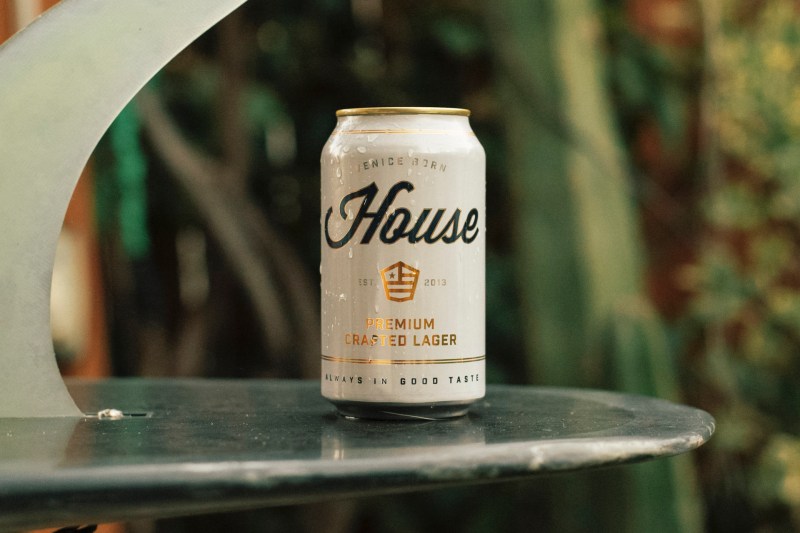
In a time when many breweries are focused on cranking out the latest and greatest, House Beer stays focused on brewing just one straightforward lager.
When Brendan Sindell founded House Beer in 2014, he had no beer industry experience — he only had a consumer’s point of view with an interest in where the beverage was headed. He noticed, at least at the time, no craft breweries were really taking on the mega brewers with light, sessionable lagers.
“There’s still so much opportunity in the cities we’re in if we become the go-to beer for today’s consumer.”
“I really didn’t see anything bridging the gap, from a quality and sessionability [standpoint],” Sindell says. “But on the brand side of things, domestic lagers were all about heritage and had been around a long time. Nothing really young, cool, and fresh, a brand in our generation.”
Launching in 2014, Sindell and his co-founders spent two years pounding the pavement in Southern California selling the crisp and clean light lager based on a recipe by a homebrewer and brewed on a contract basis at a local brewery.
The company signed a distribution deal a few years later and has since expanded to 15 cities, growing double-digits since inception, Sindell says, as the company focuses on deepening penetration in its markets, which include Los Angeles, San Francisco, New York City, Denver, Nashville, Charleston, and Chicago.
“Lager is such a big part of the market,” he says. “There’s still so much opportunity in the cities we’re in if we become the go-to beer for today’s consumer.”
As more craft breweries see the same thing Sindell did in 2014 — and recognized the lager portion of the beer market is more than 70 percent of overall sales — Sindell hopes the brand can lean back on a few key factors.
Primarily, Sindell is happy to have been a “first mover” in the markets House Beer has entered, as far as light craft lagers are concerned. Likewise, the larger breweries now pushing into the lager market also fight through cannibalization with a multitude of other brands as they keep up with their flagships and other craft trends.
“We’ve had a few years to perfect it,” he says.
“We want one beer done right and we don’t want to take any focus from that.”
But a key to the brand’s success thus far, and why Sindell hopes it can have a lasting legacy, is its branding. The slick white can with a prominent cursive “House” makes it clear what beer a customer is reaching for on the shelves.
“The branding was part of the whole idea in the beginning, looking at the sea of madness,” he said. “A lot of the labels on the craft side were like ‘What is this?’ Very esoteric stuff. How does it appeal to a mass consumer? Then it’s all marketing gimmicks from the big guys. Nothing that’s just clean, modern, timeless, and straightforward with a great clean beer inside.”
That beer inside the can isn’t likely to go anywhere, nor is House Beer’s line likely to grow beyond its base offering. Sindell said the company has played with few ideas, but it’s all under the lager idea.
“It goes back to that there’s so much opportunity in the space we’re in at the price point we’re at,” he says. “We want one beer done right and we don’t want to take any focus from that.
“We’ve stuck to our guns. This is what we want to do, what we’re trying to do and we’re not following the herd.”




